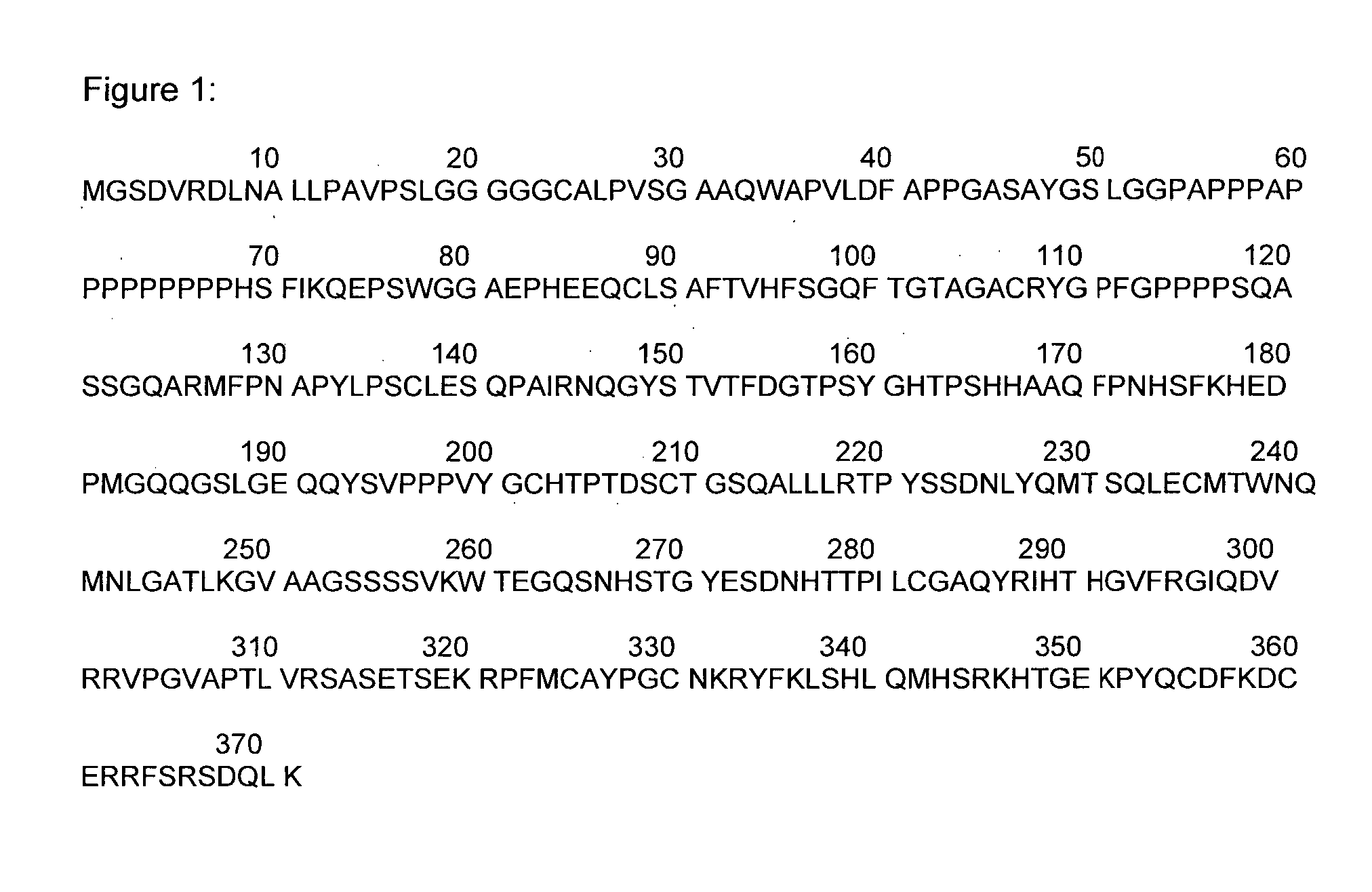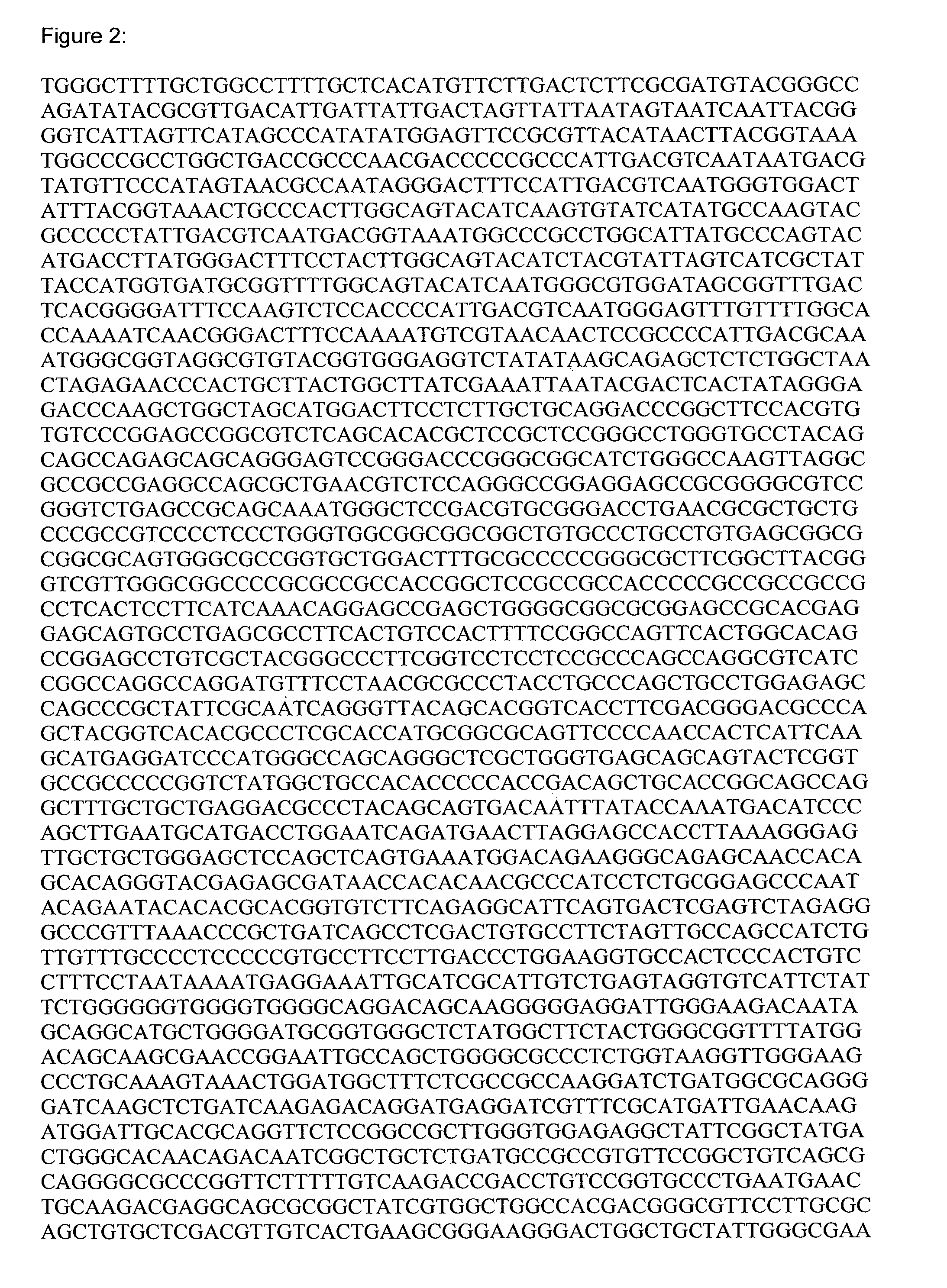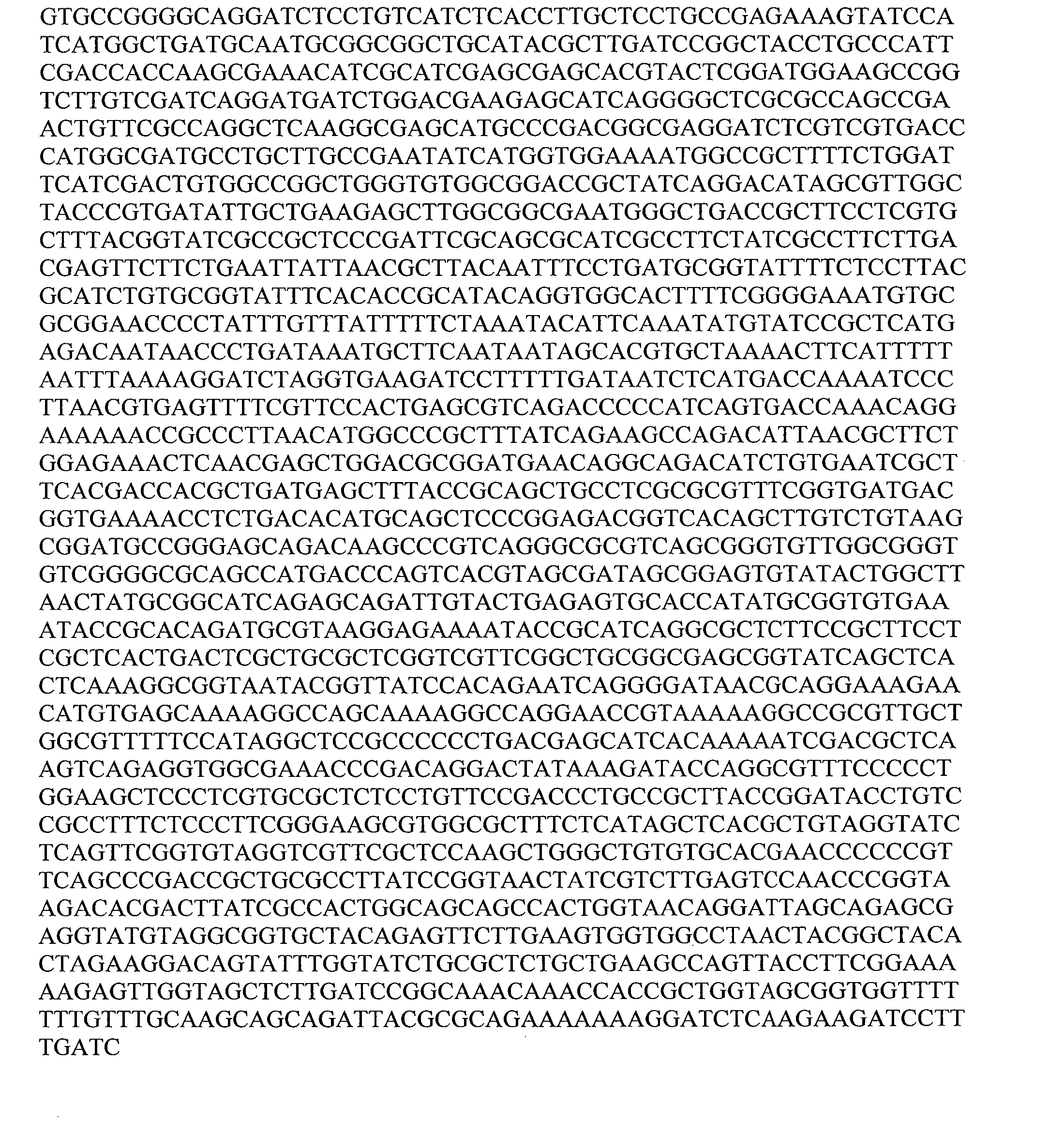Salmonella-based vectors for cancer immunotherapy targeting wilms' tumor gene wt1
a cancer immunotherapy and salmonella technology, applied in the field of salmonella-based vectors for cancer immunotherapy targeting wilms' tumor gene wt1, can solve the problems of promoting progenitor cell proliferation, affecting differentiation and promoting proliferation, and no oral cancer vaccine targeting wt1 has been described, and achieves the effect of improving the treatment options for cancer patients
- Summary
- Abstract
- Description
- Claims
- Application Information
AI Technical Summary
Benefits of technology
Problems solved by technology
Method used
Image
Examples
example 1
Preparation of Recombinant Plasmids pVAX10.mWT1 and pVAX10.hWT1
[0102]Human truncated WT1 (1116 bp, WT1 sequence according to UniProt reference sequence P19544-7, truncated by the zinc finger domain) and murine truncated WT1 (1101 bp, WT1 sequence according to UniProt reference sequence P22561-5, truncated by the zinc finger domain) were cloned into the pVAX10 backbone derived of pVAX10.VR2-1. WT1 DNA fragments were generated by double-strand gene synthesis, where oligonucleotides were linked together using a thermostable ligase.
Oligo Design and Synthesis:
[0103]In a first step, the gene sequence of truncated human and truncated murine WT1 (truncated by the zinc finger domain) were subdivided into individual oligonucleotides of 40 to 50 bases using the software “SeqEditor” (Entelechon). The defined oligonucleotides overlapped and corresponded to both DNA strands. After synthesis of the oligonucleotides of both DNA strands, the oligonucleotides were diluted with 10 mM Tris (pH 8.5) to ...
example 2
Transformation of Attenuated Salmonella Strains with the Recombinant Plasmids
[0112]S. typhi Ty 21a was transformed with plasmid pVAX10.hWT1. S. typhimurium SL7207 (aroA−) was transformed with plasmid pVAX10.mWT1. The transformation was performed by electroporation.
Preparation of Competent Salmonella Cells:
[0113]Glycerol cultures of S. typhi Ty21a and S. typhimurium SL7207 were inoculated on LB plates (animal component free [ACF] soy peptone). The plates were incubated at 37° C. overnight. One colony each was used for overnight-liquid-preculture. 3 ml LB medium (ACF soy peptone) inoculated with one colony each was incubated at 37° C. and 180 rpm overnight. To prepare competent cells, 2×300 ml of LB medium (ACF soy peptone) were inoculated with 3 ml of the overnight culture and incubated at 37° C. and 180 rpm up to an OD600 of about 0.5. The cultures were then put on ice for 10 minutes. Subsequently, the bacteria were centrifuged for 10 minutes at 3000×g at 4° C. and each pellet was r...
example 3
Assessing Antitumor Activity of VXM06 and VXM06m in Syngeneic Leukemia Mouse Model
[0118]The efficacy of VXM06 and VXM06m was assessed in a syngeneic leukemia C57 / BL6J mouse model over a period of 43 days (with dose administration on alternate days for 4 occasions followed by leukemia cell inoculation at day 17). Two groups, each comprising 10 male mice (n=10) either received VXM06 (S. typhi Ty21a containing pVAX10.hWT1 coding for truncated human WT1) or VXM06m (S. typhimurium containing pVAX10.mWT1 coding for truncated murine WT1) at doses of 1010 CFU / occasion. One similarly constituted control group received VXM0m_empty (S. typhimurium vector control with no expression plasmid) at the same dose as the treated groups. During the study, body weight, mortality, and survival investigations were undertaken. Prior to this main study, a pilot study over 14 days in male C57B16 mice (n=5 per group) without vaccination was performed using 5.0×106 and 3.0×107 FBL-3 cells, after which the firs...
PUM
| Property | Measurement | Unit |
|---|---|---|
| Electrical resistance | aaaaa | aaaaa |
| Strain point | aaaaa | aaaaa |
Abstract
Description
Claims
Application Information
 Login to View More
Login to View More - R&D
- Intellectual Property
- Life Sciences
- Materials
- Tech Scout
- Unparalleled Data Quality
- Higher Quality Content
- 60% Fewer Hallucinations
Browse by: Latest US Patents, China's latest patents, Technical Efficacy Thesaurus, Application Domain, Technology Topic, Popular Technical Reports.
© 2025 PatSnap. All rights reserved.Legal|Privacy policy|Modern Slavery Act Transparency Statement|Sitemap|About US| Contact US: help@patsnap.com



